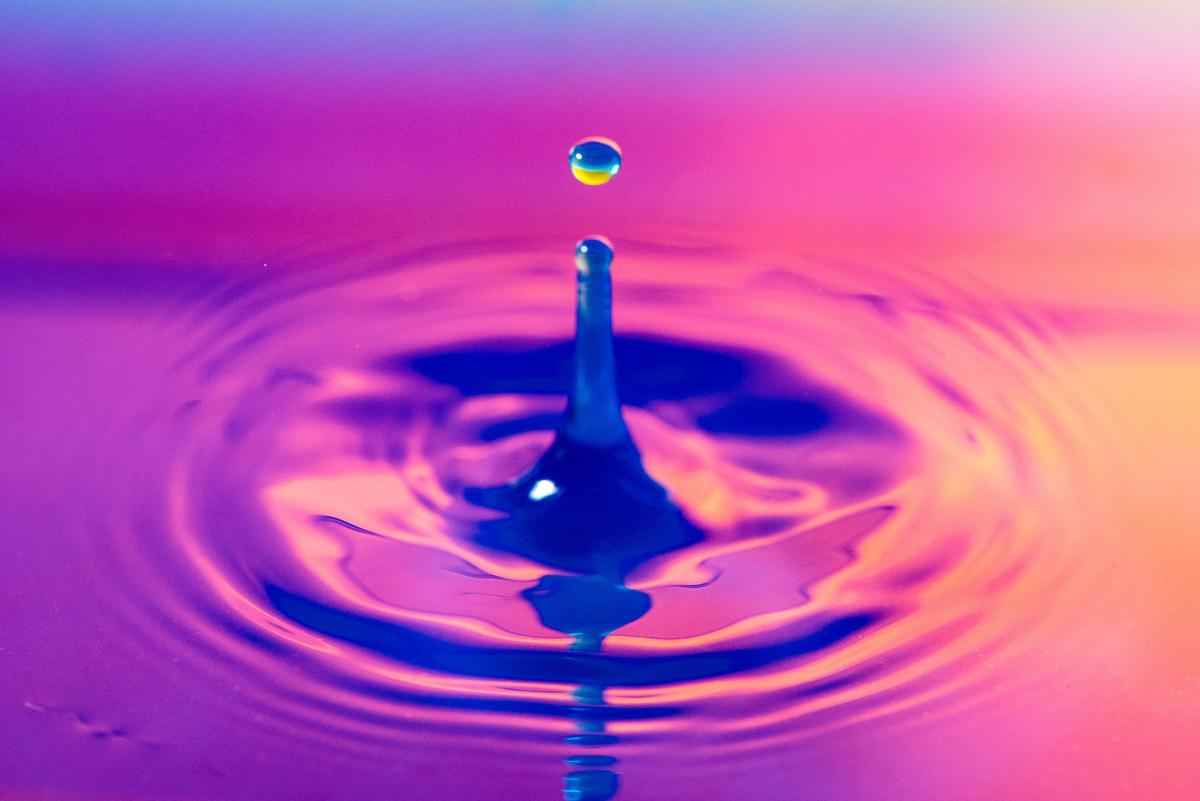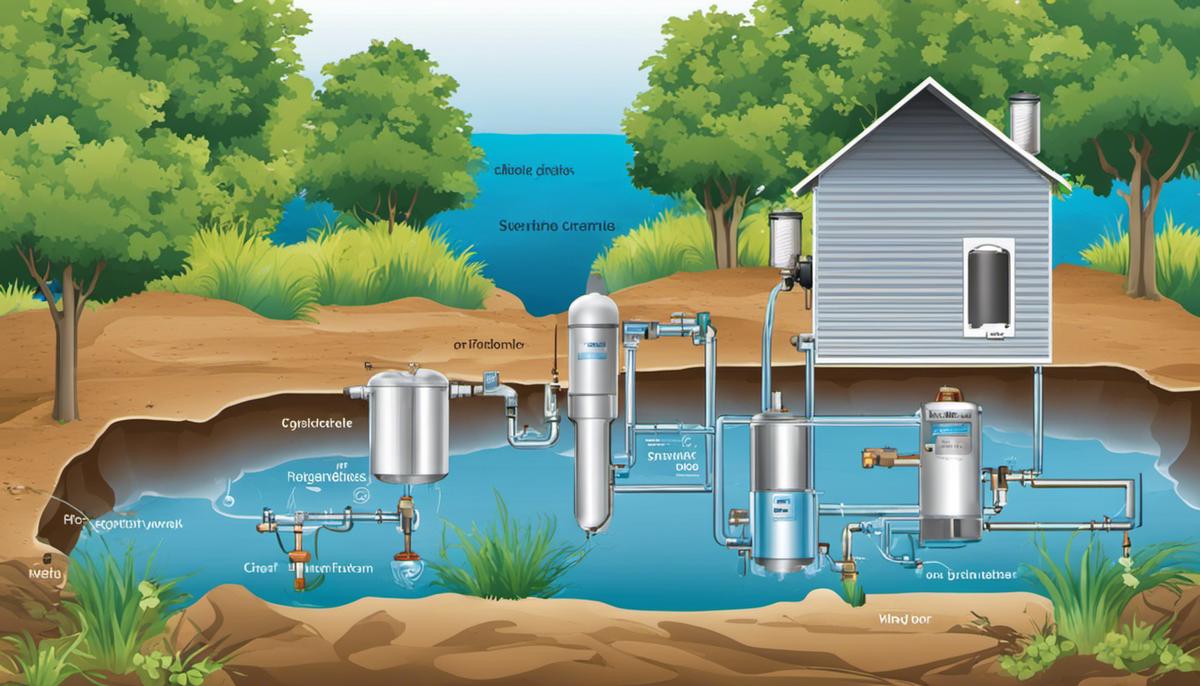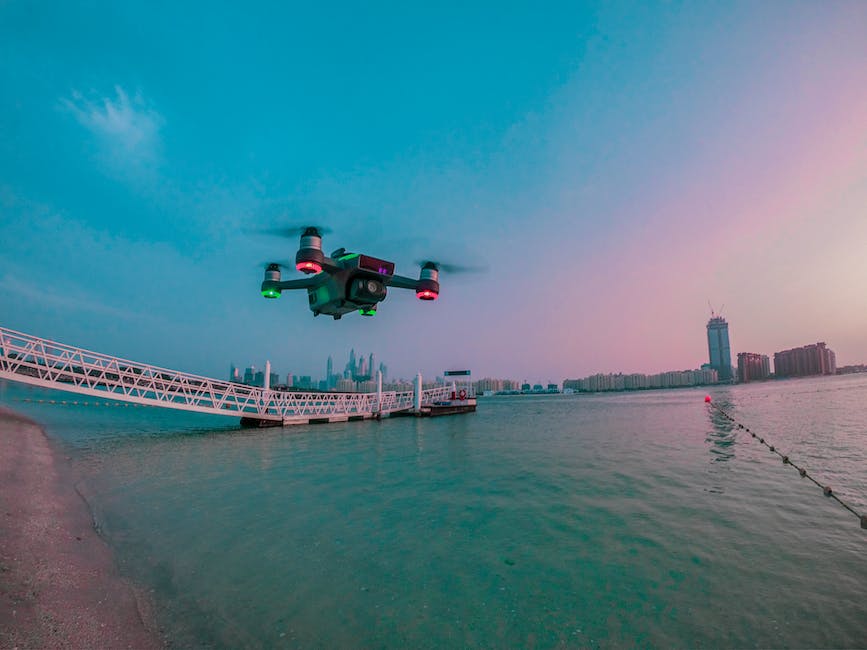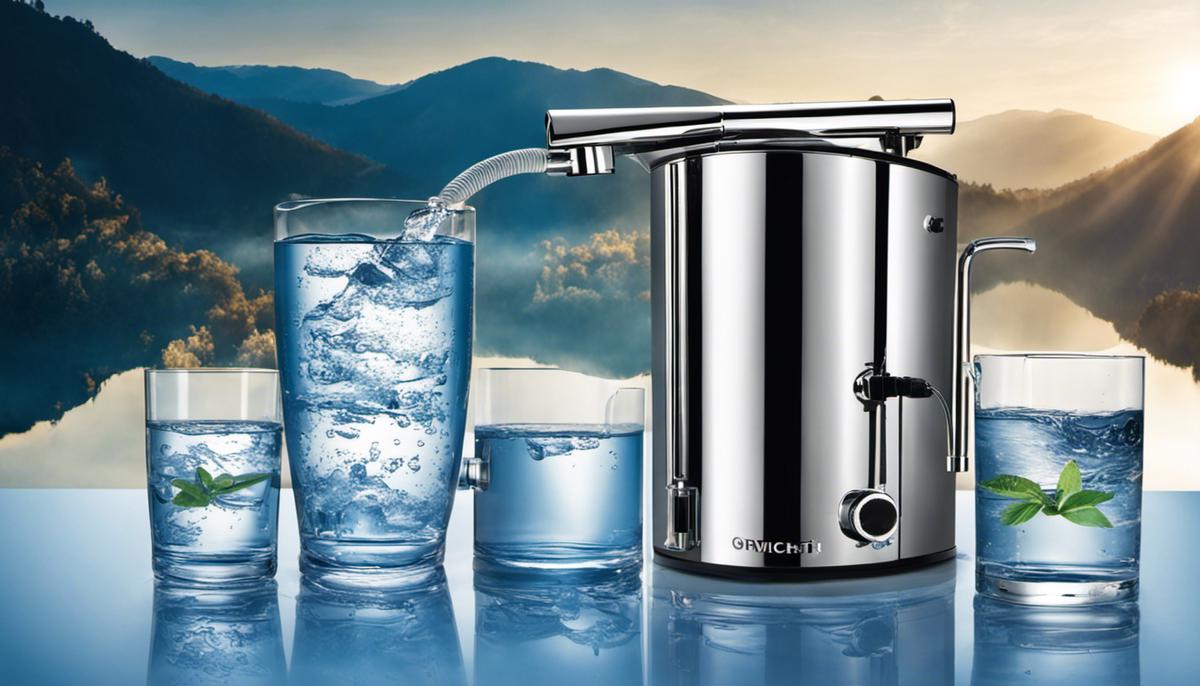In the world we inhabit, water–a vital, irreplaceable resource–is becoming subject to increasing levels of contamination. Purity, once a given, can no longer be assumed. As a solution, water filtration systems are crucial in delivering clean and safe water, free of toxins and pollutants, directly to our homes and businesses. However, even these systems are varied in their modus operandi, carefully designed to target specific contaminants, and each with its unique environmental footprint. This discourse offers a thorough insight into the field of water filtration systems: their working principles, automated advancements, performance metrics, environmental and economic consequences, and future forecasts. Stretching across a wide spectrum of information, it caters to the general public keen on making informed decisions.
Table of Contents
Overview of Current Water Filtration Systems
The Cutting-Edge of Water Filtration Technology: Latest Trends to Look Out For
Water is a basic necessity for life, making the ability to access clean, purified water essential. Well, technology has taken the wheel, blazing trails and revolutionizing the water filtration scene. Let’s dive into the latest trends in water filtration technology, peeking into the future’s fresh cascade of innovation.
High on the list is the embracing of the Internet of Things (IoT). Today, IoT water filters have surged to prominence, notable for their ability to connect, interact, and exchange data with other digital devices. These smart water filters track usage, alert users when the filter needs replacement, or even automatically order new filters online. Welcome to a new era where manual activities surrounding water filtration are being phased out in favor of seamless, automated processes.
Nanotechnology has taken a bold leap forward in this high-tech era. Using nanomaterials such as graphene, titanium dioxide, and silver nanoparticles can result in finer water filtration, eliminating even the minutest contaminants. For the tech-savvy, enthusiastic environmentalist, this advancement is not only proficient in providing safe drinking water but also offers sustainable disposal methods, lessening eco-impact.
Another seismic shift in water filtration technology is the widespread use of portable water filters. These compact, lightweight devices provide instant access to clean water whether you’re hiking up a mountain or camping in the wilderness. This crucial innovation has also proved life-saving in disaster-stricken areas where clean water is scarce, merging convenience, portability, and essential necessity in one handy package.
UV-LED technology, or ultraviolet light-emitting diode technology, represents another trendsetter. This method harnesses the bactericidal properties of UV light, effectively eradicating harmful microorganisms from water. Unlike the traditional mercury lamps, UV-LEDs offer longer service life, higher energy efficiency, and are free of harmful mercury, hence posing no environmental threat.
Reverse Osmosis (RO) remains a stalwart, but its latest incarnation—Tankless RO systems—brings fresh innovation. By eliminating bulky storage tanks, these units effectively lower the risk of secondary pollution, save space, and guarantee better water flow rates. They also come with a smart LED display for monitoring water quality, making the water filtration process transparent and efficient.
Bio-inspired filtration technology is making waves, introducing systems that mimic natural filtration processes. Imagine harnessing the efficiency of xylem tissues from plant stems or the filtering power of kidney-like membranes. Tech visionaries are pushing the frontiers, redefining water purification, and ushering in an age where natural forms meet human technology.
In the grand scheme of water filtration technology, adopting the latest trends not only revolutionizes the usage and accessibility of clean drinking water but also improves overall human health and environmental sustainability. It’s an exciting time to witness and partake in the unfolding of these innovations, a testament that technology truly has a transformative hand in restructuring our everyday lives. Stay tuned, there’s more than just a drop in the ocean.

Automation in Water Filtration Systems
Automation’s Pivotal Role and Foresight in Modern Water Filtration Systems
Diving right into it, an incredible blend of technology, design, and human needs have led to groundbreaking advancements in the world of water filtration. Automation, in particular, has heralded a dynamic shift, powering more innovative, efficient, and practical solutions in this sphere.
A focal point for innovation is the self-cleaning feature, which enhances both the lifespan and performance of water filters. Automation allows for these filtration systems to engage self-cleaning mechanisms at set intervals, effectively eradicating impurities and ensuring optimum performance. Within, flush valves open automatically to eliminate accumulated matter, increasing the filter’s efficiency and ensuring a steady supply of clean water.
Smart water sensors are another noteworthy addition made possible by automation. These sensors vigilanty monitor water quality, detecting any deviations, such as erratic pH levels or potential contaminations, keeping users informed in real-time, and ensuring safety. Through smartphone applications and direct alerts, these predictive analytics-based sensors can inform users whether the filter needs maintenance or replacement, literally putting control in the palm of their hands.
Looking to the future, it’s clear that AI-infused automation is the game changer waiting in the wings. The integration of machine learning algorithms with water filtration systems will lead to intelligent systems that not only filter and purify water but are also capable of learning usage patterns, optimizing filtration schedules, and even anticipating potential maintenance requirements.
Similarly, the infusion of automation with drone technology shows great promise for remote water filtration. Miniature drones, embedded with water sensors, could be used to inspect and analyze water sources in inaccessible regions, ensuring safe and clean water availability in even the harshest of environments.
Furthermore, contemplating the potential of genomic water analysis paints a vibrant future picture. Automated systems are expected to use DNA amplification and sequencing technology to identify and quantify microorganisms in water samples. This emerging technology will enable a fuller understanding of the microbiological content of the water and ways to improve its quality significantly.
In essence, the impact of automation on current water filtration systems is game-changing. It’s clear that the industry is on the verge of yet another shift, with promising future trends, driven largely by automation. From AI and drone technology to genomic water analysis, these innovations not only hold the promise of improved water quality but also an enhanced user experience and control. It’s an exciting time as we progress towards a future defined by automated intelligence in even the most fundamental aspects of human life – clean, safe water.

Photo by johnnyb803 on Unsplash
Efficiency and Performance Metrics in Water Filtration
When it comes to improving the efficiency of different water filtration systems, data-driven testing has emerged as a crucial method. For anyone interested in determining a filtration system’s efficacy, nothing is more important than the quantitative analysis of its elimination capabilities against contaminants.
One of the primary methods used is gravimetric testing, where weight measurement is used to determine the efficiency of a filtration system. With this method, raw water is first collected and then passed through the filtration system. The filtered water is collected, and the remaining matter – being the contaminants removed by the filtration system – is dried excess moisture and weighed.
Next up, Instrument Analysis uses scientific instruments to measure specific contaminants before and after filtering. This provides an accurate assessment of a filter’s ability to tackle specific pollutants. Toxic elements like lead, arsenic, and nitrates can only be detected through Instrument Analysis.
Another method gaining traction is Escherichia Coli bacteria testing, which evaluates a water filtration system’s effectiveness against bacteria. Raw water samples are spiked with E.coli bacteria and then passed through the water filtration system. The water after filtration is cultured and incubated; the effectiveness of bacterial reduction is closely monitored which gives insights into system performance.
The turbidity test is also a crucial measure for evaluating efficiency in water filtration systems. The murkier or cloudier the water appears, the greater the turbidity level. Through this test, professionals can examine if the filtration system effectively removes suspended particles, ultimately lowering the water’s overall turbidity.
Less traditional testing methods are also emerging with the advancement in tech, including AI-simulated testing. Artificial Intelligence models can be trained using vast datasets of different pollution categories. Simulated testing can then be performed against these factors, providing a clearer picture of a water filtration system’s reality-based efficacy.
In essence, the future of water filtration system testing is heading towards integrating these various testing methods. Combining AI simulated testing with more traditional procedures such as gravimetric testing is key. Together, they ensure not only high performance in terms of contaminant filtration but also an accelerated and precise testing process.
When evaluating the efficiency of water filtration systems, it is paramount to keep abreast of the ever-evolving tech landscape and the endless possibilities it brings. Today, comprehensive water quality analysis merges traditional scientific testing methods with emerging technologies, promising an exciting future for all keen on optimizing water filtration capabilities. From reducing hazardous pollutants to increasing water usability, advancements in tech are setting the foundation for a world where clean, purified water is a universal standard.
While these innovations may seem daunting, they are all part of a broader effort to leverage technology to solve global environmental issues. With the world witnessing a surge in tech-driven solutions, an in-depth understanding of the science behind evaluating the efficacy of water filtration systems could be humanity’s next stride towards achieving universal access to clean and healthy water.

Environmental and Economic Impact of Water Filtration Systems
Shifting the focus towards environmental and economic impact, it’s critical to note that each water filtration system carries distinct implications – these range from energy consumption and waste production to upfront cost and ongoing maintenance.
On the energy efficiency, for instance, conventional Reverse Osmosis systems form an unfortunate paradox – they’re incredibly effective at purifying water but, in doing so, they consume a significant amount of energy and generate wastewater. Cutting-edge tankless RO systems, on the other hand, utilize high-efficiency pumping with low energy consumption, achieving similar purification results at only a fraction of the environmental cost. Moreover, the water wasted by the RO process can be minimized by harnessing recirculation technology, thus adding another layer to the sustainability of such systems.
When talking about initial costs and maintenance expenses, whole house filtration systems can provide the best bet for large applications, such as apartment blocks or offices. Albeit, the upfront capital is higher than, say, under-sink filters, but the economies of scale kick in when taking into account the long-term maintenance and replacement costs. Even though not all under-sink filters are created equal; those equipped with nanotechnology filters can stand their ground by simultaneously offering superior purification and extended filter lifespan which can be thrifty in the long run.
Moving onto more specialized filtration setups like ultraviolet (UV) disinfection systems, they operate without the need for chemical additives, and consume minimal power, analogous to a household light bulb. So they are clearly in the running for being the most economically and environmentally sound when it comes to eliminating microbial contaminants. Using factorials like energy consumption, waste production, and maintenance expense helps make a more accurate modeling of the overall environmental and economic impact.
In relation, portable filters and drones employed for remote filtration present innovative solutions for bringing safe water to far-flung developing regions – locations where infrastructure costs would otherwise be prohibitive. These tech-savvy systems may come with higher upfront equipment costs, yet they provide invaluable economic and social benefits by curbing the spread of waterborne diseases and reducing the time spent accessing water.
Lastly, certain novel developments – like bio-inspired and intelligent filtration systems – are not simply the stuff of science fiction anymore but are increasingly becoming reality, promising a paradigm shift. Even though these technologies are still in their infancy and their cost-effectiveness on a large scale remains to be seen, they could redefine norms around water filtration and its associated environmental and economic impacts.
So, it’s clear that the milieu of water filtration presents a diverse array of options, each with its own merits and demerits, but with technology consistently pushing the boundaries, the future of affordable, efficient, and eco-friendly water filtration systems looks brighter than ever.

Future Predictions for Water Filtration Systems
The future of water filtration systems isn’t just important; it’s also incredibly exciting. We’ve covered some groundbreaking advancements already, but the possibilities are truly endless. Now, let’s delve even further into some ground-breaking developments.
As the quest for more efficient and sustainable solutions continues, expect the rise of graphene-based membranes for desalination in the future. Graphene, a single layer of carbon atoms arranged in a hexagonal lattice, is known for its extraordinary properties. It has high mechanical strength, is highly permeable to water, and acts as an almost perfect barrier to gases and other liquid substances. Its unique properties make it an ideal choice for water filtration. Scientists predict the development of graphene oxide membranes that act as efficient sieves, allowing the filtration of seawater to provide fresh drinking water at a fraction of the normal energy cost.
Furthermore, we can expect to see expansion in the use of bio-sensors in water filters to help detect contaminants in real-time. Imagine a system able to detect the slightest trace of harmful contaminants and alerting the user instantly. This technology could prove to be invaluable, particularly in areas with polluted water sources.
Another future possibility lies in the recycling of filtration waste. Today, significant volumes of materials are wasted during the filtration process, primarily in the form of brine. Researchers are working on methods to repurpose this waste, for instance, by extracting valuable minerals from the brine or using microbial fuel cells to generate electricity – thus making the filtration process not just eco-friendly but also profitable.
On the horizon is also the concept of ‘personalized filtration’. Incorporating real-time health data via fitness trackers, water filters could theoretically adjust the minerals in the drinking water according to a person’s specific nutritional needs. For instance, someone with low iron levels would benefit from water enriched with iron.
There’s also the potential of solid-state nanopores. This involves pores of about a single nanometer across which can differentiate molecules in water based on their size, allowing only water molecules to pass while trapping all contaminants. The technology draws inspiration from cellular membranes and has the potential to revolutionize water filtration technology.
While each of these concepts presents distinct challenges to be surmounted in implementing them on a large scale, the synergy of scientific innovation, technological advances, and a global focus on sustainable development holds promise for their successful realization.
Last but not least, it’s important to keep the bigger picture in mind. These exciting advancements and possibilities in water filtration technology aren’t just driven by practicality or curiosity. There’s a much larger issue at stake – the global water crisis. Approximately 780 million people worldwide do not have access to clean drinking water. This figure only highlights the urgency of the situation.
By continuing to push technology to its limits, innovating, and rethinking current methods, water filtration systems stand to play a significant role in solving this crisis, facilitating access to clean, safe drinking water for all. In this mission, every filter, every drop counts. And tech enthusiasts and innovators are right in the heart of the action.

Despite the technical complexities and economic implications, water filtration systems are no longer a luxury but an essential part of our lives. The quest for clean water is a shared global responsibility. Therefore, understanding the intricacies of this technology isn’t limited to specialists alone. This discourse has opened up a wealth of knowledge on the subject, aiming to empower everyone to make more informed, ethical, and future-proof decisions. As the world keeps spinning, and technology keeps advancing, the future of water filtration systems promises to be as intriguing as it is vital. This exploration serves as a milestone in our ongoing journey to perceive, understand, and preserve one of life’s most precious resources – water.

Matt Smith is a seasoned journalist and author whose expertise spans across the dynamic realms of Politics, Gadgets, Gaming, and a plethora of general interest topics. With a Master’s in Political science and tech pedigree shaped in Silicon Valley, Matt brings a wealth of knowledge and a critical eye to everything he writes.
Politics: Matt offers sharp political commentary, drawing from his experience as a political analyst and his academic rigor.
Gadgets: His tech insights are grounded in real-world experience, having been on the front lines of innovation with a degree from Caltech.
Gaming: A respected voice in gaming, Matt’s reviews and trend analyses are a testament to his deep involvement in the gaming community.
General Topics: From science to culture, Matt’s writing spans a broad spectrum, engaging readers with a blend of expertise and relatable prose.
Engage with Matt’s compelling content for a fresh perspective on the issues at the forefront of today’s discourse.

